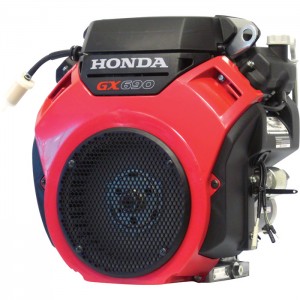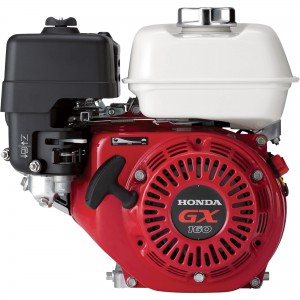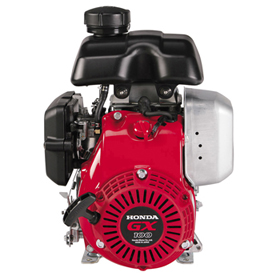 Honda’s GX Series V-twins are built for high demand applications including everything from generators to UTVs, delivering power with the company’s signature reliability and ease of operation. No matter what your GX powers, there are a few things you should do to get the most out of your engine.
Honda’s GX Series V-twins are built for high demand applications including everything from generators to UTVs, delivering power with the company’s signature reliability and ease of operation. No matter what your GX powers, there are a few things you should do to get the most out of your engine.Controls
All the controls on these motors are placed on a control panel, located to the right of the fan cover. From top to bottom, there’s a throttle, choke knob, engine switch, oil alert indicator and an hour meter. There are a couple things you should know about how these controls work on the GX:
- Don’t see a throttle or a choke lever? Some equipment mounts the throttle remotely, typically placing it on a handle. This is almost guaranteed with vertical shaft models.
- The choke is engaged by pulling the choke knob out.
- The hour meter will display the current operation hours when the ignition switch is on, but it only counts time when the engine is running.
- These engines have a fuel cut solenoid that lets fuel enter the carburetor when the ignition switch is in the “On” and “Start” positions, and then closes the fuel line when the switch is off. If the battery becomes disconnected, the solenoid will close the fuel line, causing the engine to stall. Some models also have a separate fuel valve on the fuel tank that needs to be opened when the engine will be used, then closed when it is put away.
- Honda’s Oil Alert system will shut down the engine if the oil level inside the crankcase gets too low, preventing potential engine damage. If the system is tripped, the indicator light will turn on. If the engine stops suddenly, check both the light and the oil level.
Starting
The throttle should be about 1/3 of the way from the lowest “Min.” position, and the choke should be closed unless the motor is being restarted. If there is a fuel valve on the tank, make sure it’s open. To turn over the motor, turn the ignition switch to “On,” then twist it to “Start” until the engine fires up. If the engine isn’t running after 5 seconds, release the ignition switch and wait 10 seconds to let the starter motor cool off before trying again. Once the engine is running, it should idle for a couple minutes to let it warm up.
Stopping
Move the throttle to the “Min.” position, then turn the ignition to “Off.” If equipped, close the fuel valve.
Oil
On horizontal shaft engines, the oil is poured into a filler neck located at the top of the right side cylinder head. The oil can be checked using the automotive-style dipstick behind this cylinder. On vertical shaft models, there will be a combination filler neck cap and dipstick behind the right-hand cylinder. The oil level should be checked after the engine has idled for a couple minutes and is then shut off. The level should be between the two marks on the dipstick. On vertical shaft models, the cap should not be threaded into the filler neck when using the dipstick to check the oil level.
GX Series engines are designed to use 5W30 or 10W30 oil in most operating conditions. If you need to operate the motor at temperatures below 10 degrees F (-15 degrees C) a synthetic 5W30 is recommended. SAE 30 can be used at temperatures above 50 degrees F (10 degrees C).
Oil can be drained by removing a plug bolt at the base of the engine. The GX series also uses a spin-on oil filter, which should be replaced each time the oil is changed.
Air Filter
The air cleaner is behind a latched cover between the cylinders. Vertical shaft motors use a series of panels, while horizontal shaft motors use round filter elements.
The air cleaner uses both a paper element and a foam element. The foam element should be cleaned by washing it with a mild detergent or a non-flammable solvent. Once dry, soak it in clean engine oil and squeeze out any excess. The paper element should be tapped against a hard surface to loosen any dirt between the pleats.
Spark Plugs
The spark plug gap should be between 0.028-0.031 inches (0.7-0.8 mm.) The plugs can be removed and installed using a 5/8 inch plug wrench or socket. When installing, screw the plug into the engine by hand to ensure it doesn’t cross thread, then tighten it down 1/8-1/4 turn after it seats if it’s used, or ½ turn if it is new.
Getting Parts
Need something for your Honda GX V-twin? You can get it from www.hondalawnparts.com. We’re a certified Honda Small Engine Equipment dealer, so we carry everything for their motors. When you search for parts on our site, you’ll see factory parts diagrams and descriptions so you can quickly find what you need. We ship parts across the U.S. and Canada.



